Periodontal disease (often called gum disease) is typically signified by red, swollen, painful, or bleeding gums, but in some cases has no noticeable symptoms. Periodontal disease is a progressive condition which begins with mild gum inflammation called “gingivitis”. It is the leading cause of tooth loss in adults living in the developed world, and should be taken very seriously.
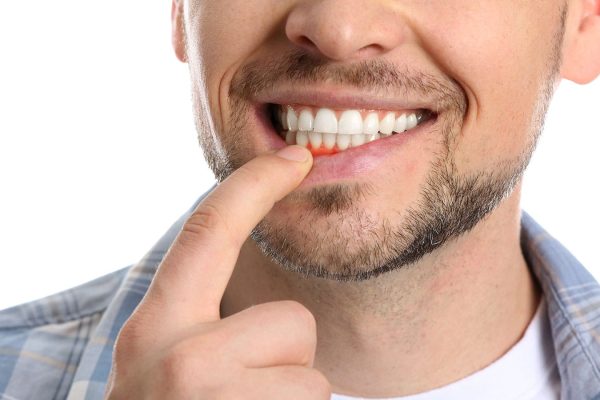

Periodontal disease (also known as periodontitis and gum disease) is a common inflammatory condition that affects the supporting and surrounding soft tissues of the tooth, eventually affecting the jawbone itself in the disease’s most advanced stages.
Periodontal disease is most often preceded by gingivitis, which is a bacterial infection of the gum tissue. A bacterial infection affects the gums when the toxins contained in plaque begin to irritate and inflame the gum tissues. Once this bacterial infection colonizes in the gum pockets between the teeth, it becomes much more difficult to remove and treat. Periodontal disease is a progressive condition that eventually leads to the destruction of the connective tissue and jawbone. If left untreated, it can cause shifting teeth, loose teeth, and eventually tooth loss.
Periodontal disease is the leading cause of tooth loss among adults in the developed world and should always be promptly treated.
Research studies have shown that there is a strong association between periodontal disease and other chronic conditions such as diabetes, heart disease, pregnancy complications and respiratory disease.
Periodontal disease is characterized by chronic inflammation of the gum tissue, periodontal infection below the gum line and a presence of disease-causing bacteria in the oral region. Halting the progression of periodontal disease and maintaining excellent standards of oral hygiene will not only reduce the risk of gum disease and bone loss, but also reduce the chances of developing other serious illnesses.
Common cofactors associated with periodontal disease:
A research study has shown that individuals with pre-existing diabetic conditions are more likely to either have, or be more susceptible to periodontal disease. Periodontal disease can increase blood sugar levels which makes controlling the amount of glucose in the blood difficult. This factor alone can increase the risk of serious diabetic complications. Conversely, diabetes thickens blood vessels and therefore makes it harder for the mouth to rid itself of excess sugar. Excess sugar in the mouth creates a breeding ground for the types of oral bacteria that cause gum disease.
There are several theories which explain the link between heart disease and periodontitis. One such theory is that the oral bacteria strains which exacerbate periodontal disease attach themselves to the coronary arteries when they enter the bloodstream. This in turn contributes to both blood clot formation and the narrowing of the coronary arteries, possibly leading to a heart attack.
A second possibility is that the inflammation caused by periodontal disease causes a significant plaque build up. This can swell the arteries and worsen pre-existing heart conditions. An article published by the American Academy of Periodontology suggests that patients whose bodies react to periodontal bacteria have an increased risk of developing heart disease.
Women in general are at increased risk of developing periodontal disease because of hormone fluctuations that occur during puberty, pregnancy and menopause. Research suggests that pregnant women suffering from periodontal disease are more at risk of preeclampsia and delivering underweight, premature babies.
Periodontitis increases levels of prostaglandin, which is one of the labor-inducing chemicals. Elevated levels prostaglandin may trigger premature labor, and increase the chances of delivering an underweight baby. Periodontal disease also elevates C-reactive proteins (which have previously been linked to heart disease). Heightened levels of these proteins can amplify the inflammatory response of the body and increase the chances of preeclampsia and low birth weight babies.
Oral bacterium linked with gum disease has been shown to possibly cause or worsen conditions such as emphysema, pneumonia and Chronic Obstructive Pulmonary Disease (COPD). Oral bacteria can be drawn into the lower respiratory tract during the course of normal inhalation and colonize, causing bacterial infections. Studies have shown that the repeated infections which characterize COPD may be linked with periodontitis.
In addition to the bacterial risk, inflammation in gum tissue can lead to severe inflammation in the lining of the lungs, which aggravates pneumonia. Individuals who suffer from chronic or persistent respiratory issues generally have low immunity. This means that bacteria can readily colonize beneath the gum line unchallenged by body’s immune system.
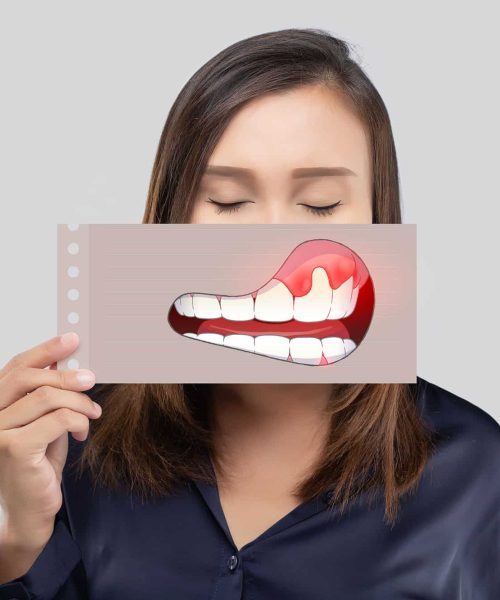
There are many surgical and nonsurgical treatments the periodontist may choose to perform, depending upon the exact condition of the teeth, gums and jawbone. A complete periodontal exam of the mouth will be done before any treatment is performed or recommended.
Here are some of the more common treatments for periodontal disease:
Periodontal disease generally begins when the bacteria living in plaque cause an infection in the surrounding tissues of the teeth, causing them to become irritated and painful. Eventually, this infection will cause the jawbone to recede and the tooth to become loose.
Sometimes a periodontal scaling and root planing is needed to remove the bacterial plaque and calculus (tartar) from the surfaces below the gum line. Where periodontal disease is advanced and the jawbone has regressed significantly, loose teeth that cannot be saved may need to be removed.
Because periodontal disease is progressive, it is essential to remove the bacteria and calculus build up to halt the spread of the infection. Your dentist will be happy to advise you on effective cleaning methods and treatment options.
The objective of scaling and root planing is to remove etiologic agents which cause inflammation to the gingival (gum) tissue and surrounding bone. Common etiologic agents removed by this conventional periodontal therapy include dental plaque and tartar (calculus).
These non-surgical procedures which completely cleanse the periodontium, work very effectively for individuals suffering from gingivitis (mild gum inflammation) and moderate/severe periodontal disease.
Reasons for scaling and root planing
Scaling and root planing can be used both as a preventative measure and as a stand-alone treatment. These procedures are performed as a preventative measure for a periodontitis sufferer.
Here are some reasons why these dental procedures may be necessary:
Disease prevention – The oral bacteria which cause periodontal infections can travel via the bloodstream to other parts of the body. Research has shown that lung infections and heart disease have been linked to periodontal bacteria. Scaling and root planing remove bacteria and halts periodontal disease from progressing, thus preventing the bacteria from traveling to other parts of the body.
Tooth protection – When gum pockets exceed 3mm in depth, there is a greater risk of periodontal disease. As pockets deepen, they tend to house more colonies of dangerous bacteria. Eventually, a chronic inflammatory response by the body begins to destroy gingival and bone tissue which may lead to tooth loss. Periodontal disease is the number one cause of tooth loss in the developed world.
Aesthetic effects – Scaling and root planing help remove tartar and plaque from the teeth and below the gumline. As an added bonus, if superficial stains are present on the teeth, they will be removed in the process of the scaling and root planing procedure.
Better breath – One of the most common signs of periodontal disease is halitosis (bad breath). Food particles and bacteria can cause a persistent bad odor in the oral cavity which is alleviated with cleaning procedures such as scaling and root planing.
What do scaling and root planing treatments involve?
Scaling and root planing treatments are only performed after a thorough examination of the mouth. The dentist will take X-rays, conduct visual examinations and make a diagnosis before recommending or beginning these procedures.
Depending on the current condition of the gums, the amount of calculus (tartar) present, the depth of the pockets and the progression of the periodontitis, local anesthetic may be used.
Scaling – This procedure is usually performed with special dental instruments and may include an ultrasonic scaling tool. The scaling tool removes calculus and plaque from the surface of the crown and root surfaces. In many cases, the scaling tool includes an irrigation process that can also be used to deliver an antimicrobial agent below the gums that can help reduce oral bacteria.
Root Planing – This procedure is a specific treatment which serves to remove cementum and surface dentin that is embedded with unwanted microorganisms, toxins and tartar. The root of the tooth is literally smoothed in order to promote good healing. Having clean, smooth root surfaces helps bacteria from easily colonizing in future.
Following these deep cleaning procedures, the gum pockets may be treated with antibiotics. This will soothe irritation and help the gum tissues to heal quickly.
During the next appointment, the dentist or hygienist will thoroughly examine the gums again to see how well the pockets have healed. If the gum pockets still measure more than 3mm in depth, additional and more intensive treatments may be recommended.
If you have any concerns or questions about scaling and root planing, or periodontal disease, please ask your dentist.
It only takes twenty four hours for plaque that is not removed from your teeth to turn into calculus (tartar)! Daily home cleaning helps control plaque and tartar formation, but those hard to reach areas will always need special attention.
Once your periodontal treatment has been completed, your dentist and dental hygienist will recommend that you have regular maintenance cleanings (periodontal cleanings), usually four times a year. At these cleaning appointments, the pocket depths will be carefully checked to ensure that they are healthy. Plaque and calculus that is difficult for you to remove on a daily basis will be removed from above and below the gum line.
In addition to your periodontal cleaning and evaluation, your appointment will usually include:
Good oral hygiene practices and periodontal cleanings are essential in maintaining dental health and keeping periodontal disease under control!
Periodontal disease is a progressive condition that leads to severe inflammation and tooth loss if left untreated. Antibiotic treatments can be used in combination with scaling and root planing, surgery, or as a stand-alone treatment to help reduce bacteria before and/or after many common periodontal procedures.
Antibiotic treatments come in several different types, including oral forms and topical gels which are applied directly into the gum pockets. Research has shown that in the case of acute periodontal infection, and periodontal disease, antibiotic treatments have been incredibly effective.
Antibiotics can be prescribed at a low dose for longer term use or as a short term medication to deter bacteria from re-colonizing.
In our office, we utilize Arestin® . This Minocycline antibiotic comes in mini capsules which are delivered into the gums.
Noticeable periodontal improvements are usually seen after systemic or oral antibiotic treatment. We will incorporate antibiotic treatments as necessary for the healing of your periodontal condition.
If you have any questions about periodontal disease or antibiotic treatments, contact our practice at your convenience.
Periodontal disease is a progressive condition which leads to gum inflammation, the recession of bone and gum tissue, and tooth loss if left untreated. There are a variety of effective treatments and procedures available, including pocket irrigation, which can assist in treating the progression of the disease.
Pocket irrigation aims to cleanse plaque from the interdental (between teeth) and subgingival (under the gumline) regions of the mouth in order to prevent the colonization of harmful oral bacteria. This procedure is also used to deliver antibacterials to the subgingival areas.
Reasons for pocket irrigation
Pocket irrigation, which is also known as oral irrigation, is a versatile dental treatment used for several different preventative purposes. Pocket irrigation may be performed as part of a professional dental cleaning, or at home with a specially modified oral irrigator.
Here are the main ways in which pocket irrigation can be beneficial:
Interdental cleaning – Pocket irrigators blast plaque, food particles and other debris from between the teeth. The removal of harmful materials and bacteria keep the gum pockets cleaner and shallower, helping the gum tissue remain healthy.
Halitosis prevention – Halitosis (or bad breath) is generally a result of old food particles between the teeth, and tooth decay. A toothbrush or dental scraper alone may not be able to reach into the depths of the gum pockets, but water jets can flush out food particles and help clean above and below the gumline.
Subgingival cleaning – Pocket irrigators have a rounded tip which eliminates the risk of tissue damage while cleaning under the gumline. The side port opening facilitates extensive cleansing by flushing out bacteria, particles and toxins from below the gumline.
Antimicrobial application – Antimicrobial substances have proven effective for eliminating and preventing some strains of harmful oral bacteria. Antimicrobial substances can be combined with water, or used as a stand-alone treatment for successful pocket irrigation.
What does pocket irrigation treatment involve?
Pocket irrigation is generally performed in combination with other dental treatments, such as professional dental cleaning or pocket reduction surgery.
In the case of a pocket reduction surgery, the tartar and subgingival plaque will be removed with special scaling and root planing instruments. When the pockets are free of debris, an antimicrobial agent may be applied using an oral irrigator. This will help reduce harmful oral bacteria which still remain in the pockets.
During a deep cleaning procedure, a pocket irrigator may be used after scaling and root planing to cleanse the pockets. Again, an antimicrobial agent may be applied to help reduce subgingival oral bacteria.
Pocket irrigation can be performed at home as part of the daily oral routine using a water jet or water pick. Flushing the interdental area with water is less harmful to soft tissue than dental floss, but should not be used as a substitute for professional dental cleaning.
If you have any questions about pocket irrigation, cleaning your teeth, periodontal disease and treatment, please contact our practice.
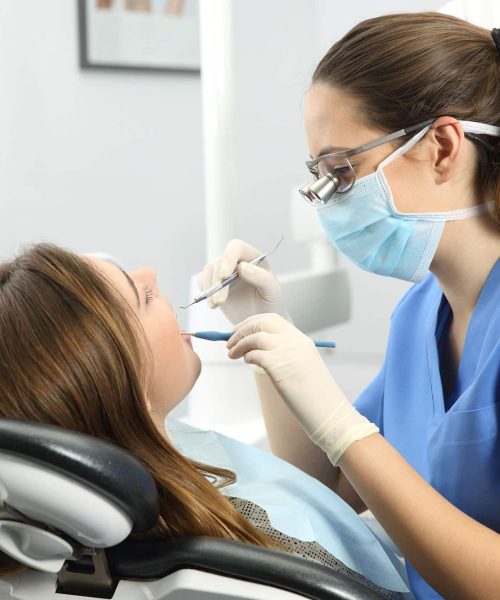
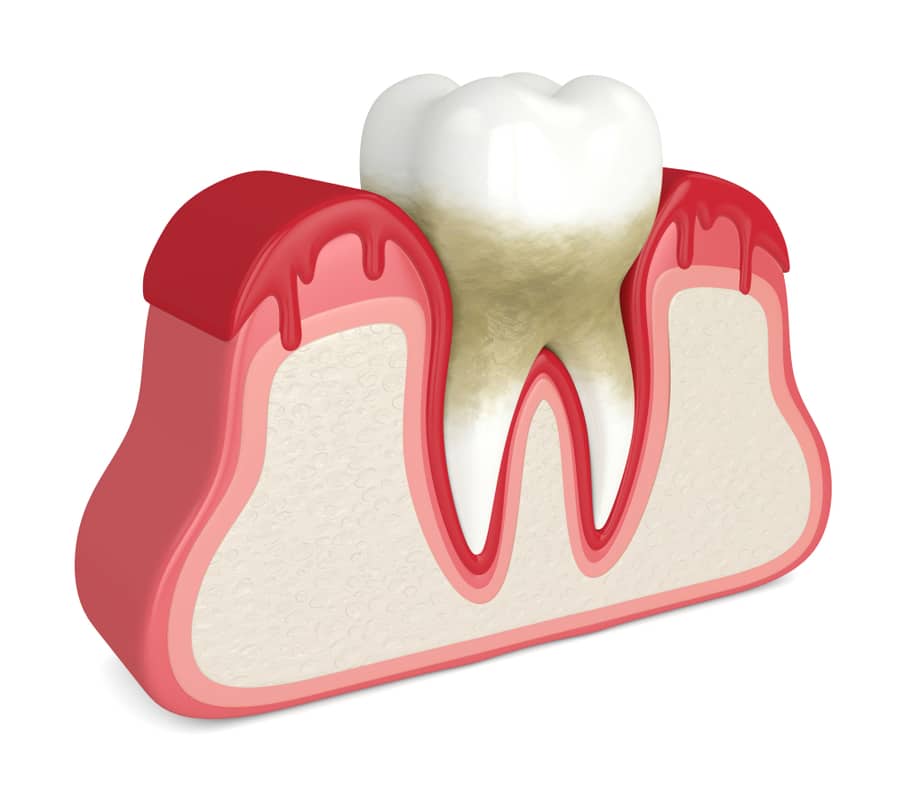
Good oral hygiene, a balanced diet, and regular dental visits can help reduce your risk of developing periodontal disease.

